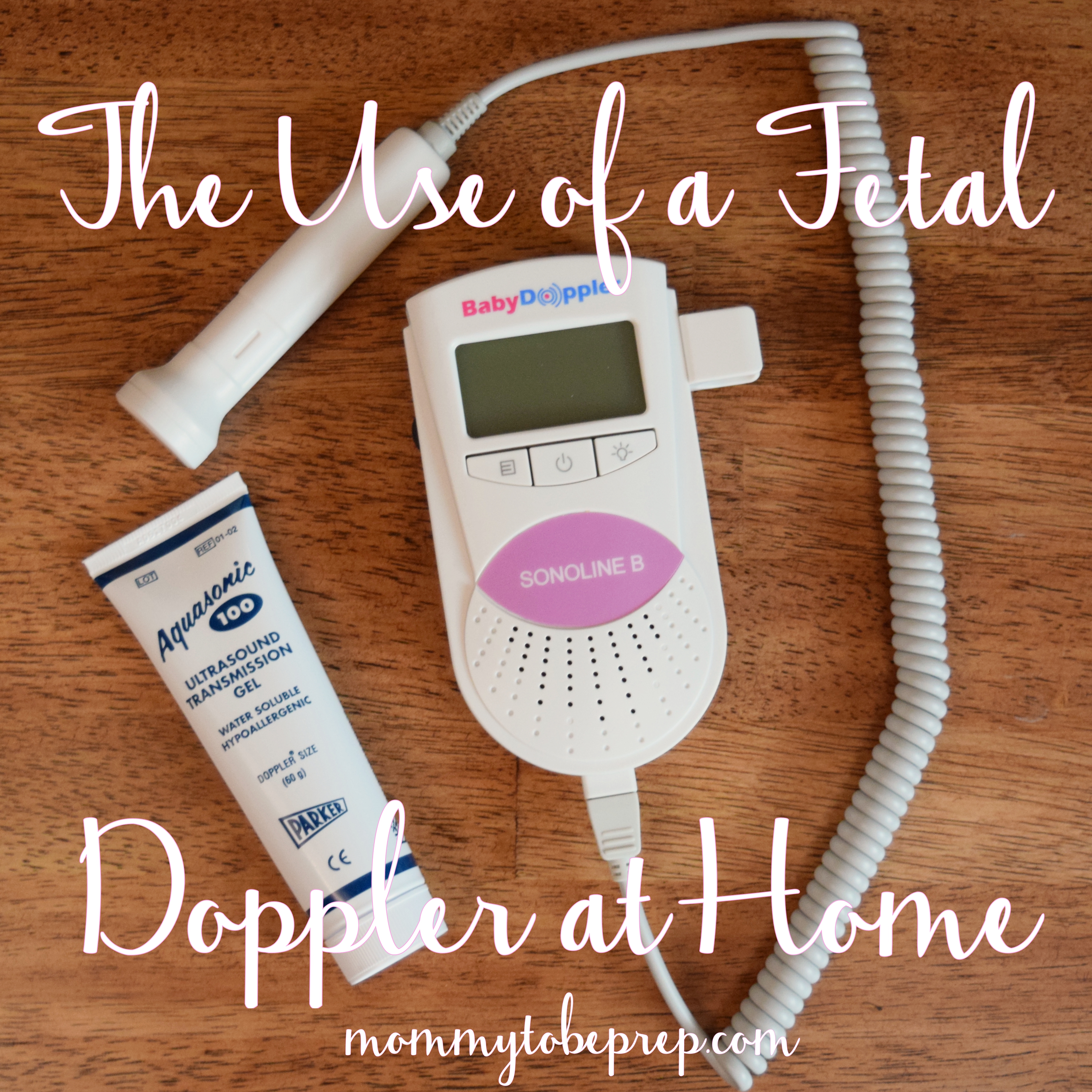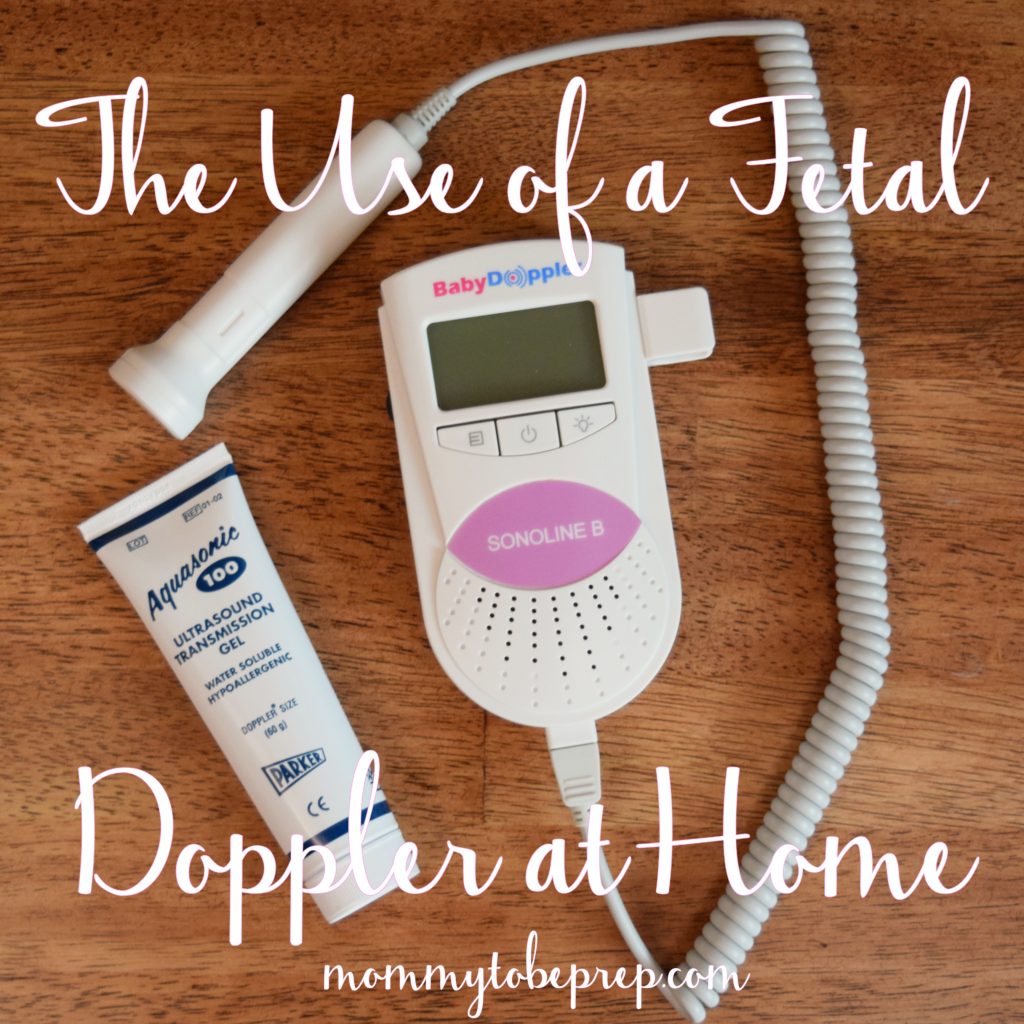The Use of a Fetal Doppler at Home

What is a Handheld Fetal Doppler?
A handheld Doppler is a device that uses ultrasound to read your baby’s heartbeat. Your nurse or provider may use a handheld Doppler at your OB appointment after 12 weeks gestation to assess your baby’s heart rate and rhythm. Handheld Doppler monitors may also be bought for at home use, such as the “Baby Doppler.”
You may also have heard of a Doppler ultrasound to be used non-obstetrically. Doppler monitors can also be used to assess blood flow through blood vessels throughout your body in a clinic or hospital setting.
How a Doppler Works
The probe or “transducer” is placed directly on the skin with ultrasound gel. The Doppler is then turned on and conducts ultrasound or high frequency sound waves into the area that it is placed over.1 The word “ultrasonic is a combination of Latin roots of “ultra” meaning beyond and “sonic” meaning sound. Ultrasonics or ultrasound is exactly what it says, sound waves that are outside the audible range for humans. The sound waves then bounce off of a moving object (in this case the baby’s heart) and then are transmitted into a sound emitted by a speaker in real time.2
Why Use a Fetal Doppler?
When Correctly Used, a fetal Doppler Provides Imperative Information
After accurately locating the best position for the Doppler probe, the monitor should emit the audible fetal heartbeat. Depending on your specific handheld Doppler, the fetal heart rate will need to be determined by either counting the rate with a timer/second hand watch or by simply reading the rate off of the screen. For example, counting the beats for 6 seconds and multiplying by 10, or even counting the beats for a full minute to determine the rate. Even with a handheld Doppler that populates the fetal heart rate on the screen, I still recommend comparing the beats to a second hand watch to confirm the correct rate.
A normal fetal heart rate fluctuates between 110 to 160 beats per minute. A fetal heart rate that does not vary, or is too slow or too fast may signal a potential problem with the fetus.4
Psychological Benefits of The Use of a Fetal Doppler at Home
The audible evidence that you are growing a real human with a beating heart inside you can be exhilarating and provide encouragement to get through difficult days of morning sickness and fatigue. In addition, hearing your own baby’s heart beating may make the pregnancy more real to you or your family members, providing an additional way to bond with the unborn baby.
Can a Doppler Cause Harm to Mom or Baby?
Ultrasound has an “Excellent Safety Record”
The FDA claims ultrasound has had an excellent safety record and has been used for over 20 years. Ultrasound does not carry the same risks as other imaging systems that use ionizing radiation such as x-rays.
A Home Doppler should not Supersede Medical Attention
Dr. Chakladar a British Doctor shares a story in the New York Times of a mother who was full term but had experienced decreased fetal movement. She used her handheld fetal Doppler at home to find reassurance when she believed she heard her baby’s heartbeat. When she visited her Doctor’s office the next Monday there was no fetal heartbeat. Dr Chakladar states, “On their own, these monitors are harmless; it is their improper use by parents to reassure themselves which can be dangerous. These monitors can be great fun, and I would personally buy one. However, they are dangerous if they are used by untrained people as an alternative to seeking medical advice.”
More Research Data is Needed
According to a research article published in June 2017, titled “Mechanical and Biological Effects of Ultrasound: A Review of Present Knowledge” lower levels of exposed ultrasound, “such as diagnostic ultrasound” has no established evidence to cause specific harmful effect. However, due to few research data, it is difficult to draw a “firm conclusion.”
The FDA also states, “Ultrasound energy has the potential to produce biological effects on the body. Ultrasound waves can heat the tissues slightly. In some cases, it can also produce small pockets of gas in body fluids or tissues (cavitation). The long-term consequences of these effects are still unknown.”3 Because of this, the FDA strongly recommends that “keepsake” images obtained during non-medical exams should be avoided. They also recommend that baby Doppler monitors should only be “used by, or under the supervision of a health care professional.”5
How to Use Your Doppler
Baby Doppler gives an 8 step process on just how to use your doppler here.
Personal Review of “Baby Doppler” Sonoline B
The Sonoline B monitor came in a perfect small package including everything needed-the actual monitor, connecting probe, batteries, and ultrasound gel. I chose this handheld fetal Doppler monitor because it most resembles the Doppler monitor we use on patients at the hospital. My favorite part is the simplicity. The monitor has three buttons-the power button, a button to control the three modes, and a button to control the backlight. The speaker is clear with adjustable volume as well as a headphone jack. The probe that came with the monitor is 3Mhz, which worked well as I was able to find the little heart rate with ease!
Resources
- https://www.fda.gov/radiation-emittingproducts/radiationemittingproductsandprocedures/medicalimaging/ucm115357.htm
- http://www.scienceclarified.com/everyday/Real-Life-Chemistry-Vol-5/Ultrasonics.html
- https://www.acog.org/About-ACOG/News-Room/News-Releases/2009/ACOG-Refines-Fetal-Heart-Rate-Monitoring-Guidelines
- https://www.fda.gov/radiation-emittingproducts/radiationemittingproductsandprocedures/medicalimaging/ucm115357.htm
- https://www.fda.gov/ForConsumers/ConsumerUpdates/ucm095508.htm.

